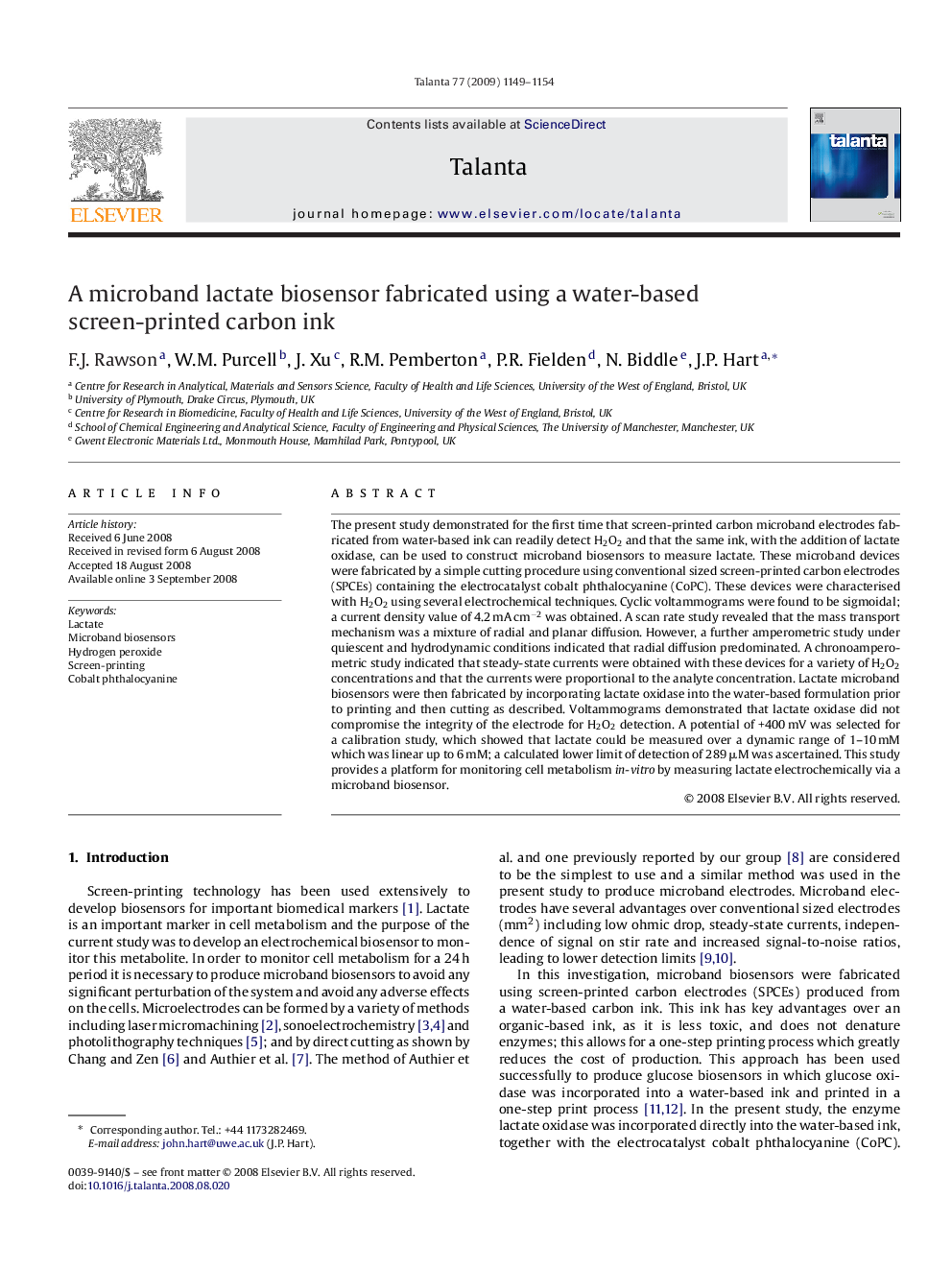| Article ID | Journal | Published Year | Pages | File Type |
|---|---|---|---|---|
| 1247050 | Talanta | 2009 | 6 Pages |
The present study demonstrated for the first time that screen-printed carbon microband electrodes fabricated from water-based ink can readily detect H2O2 and that the same ink, with the addition of lactate oxidase, can be used to construct microband biosensors to measure lactate. These microband devices were fabricated by a simple cutting procedure using conventional sized screen-printed carbon electrodes (SPCEs) containing the electrocatalyst cobalt phthalocyanine (CoPC). These devices were characterised with H2O2 using several electrochemical techniques. Cyclic voltammograms were found to be sigmoidal; a current density value of 4.2 mA cm−2 was obtained. A scan rate study revealed that the mass transport mechanism was a mixture of radial and planar diffusion. However, a further amperometric study under quiescent and hydrodynamic conditions indicated that radial diffusion predominated. A chronoamperometric study indicated that steady-state currents were obtained with these devices for a variety of H2O2 concentrations and that the currents were proportional to the analyte concentration. Lactate microband biosensors were then fabricated by incorporating lactate oxidase into the water-based formulation prior to printing and then cutting as described. Voltammograms demonstrated that lactate oxidase did not compromise the integrity of the electrode for H2O2 detection. A potential of +400 mV was selected for a calibration study, which showed that lactate could be measured over a dynamic range of 1–10 mM which was linear up to 6 mM; a calculated lower limit of detection of 289 μM was ascertained. This study provides a platform for monitoring cell metabolism in-vitro by measuring lactate electrochemically via a microband biosensor.
